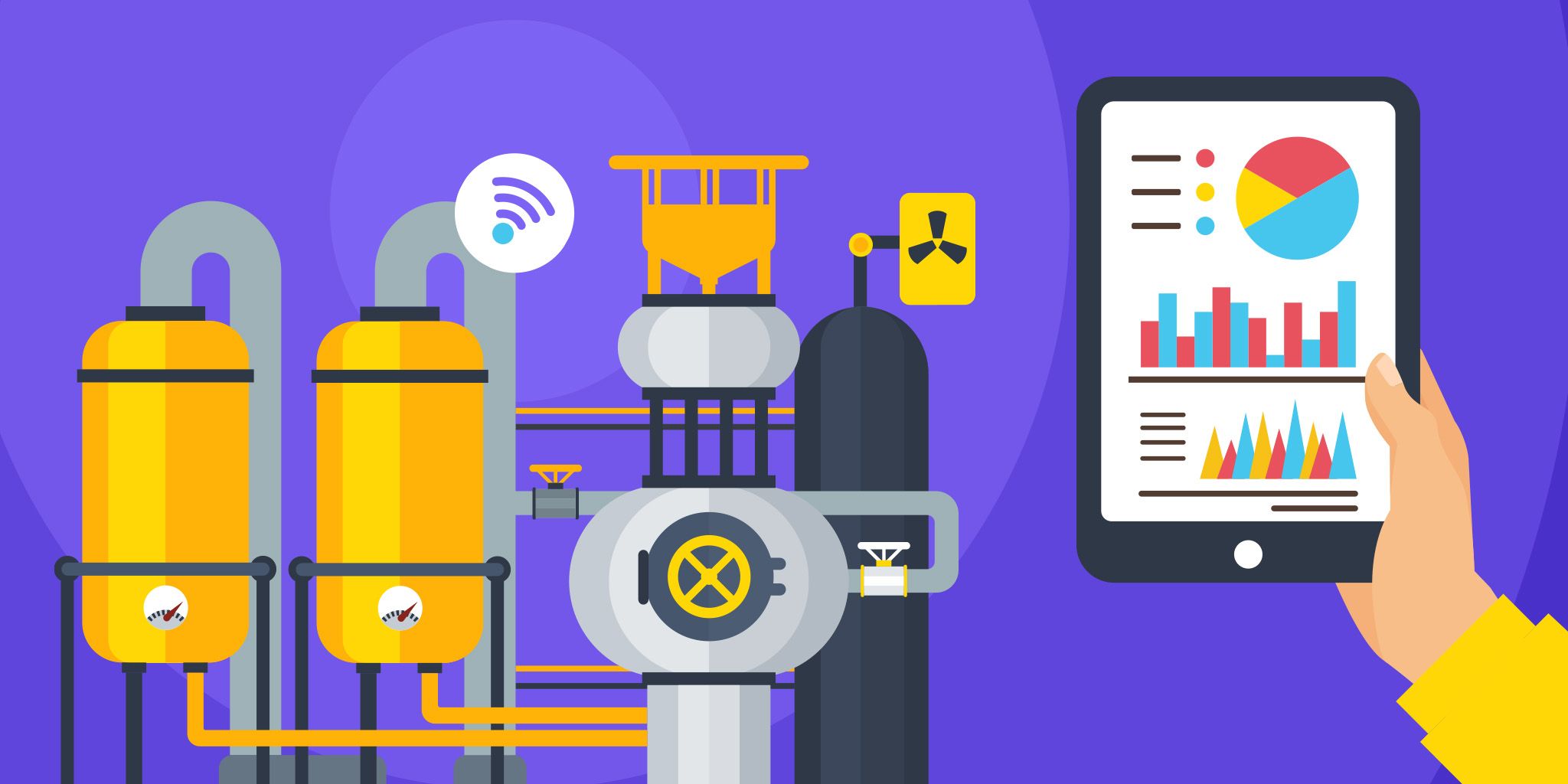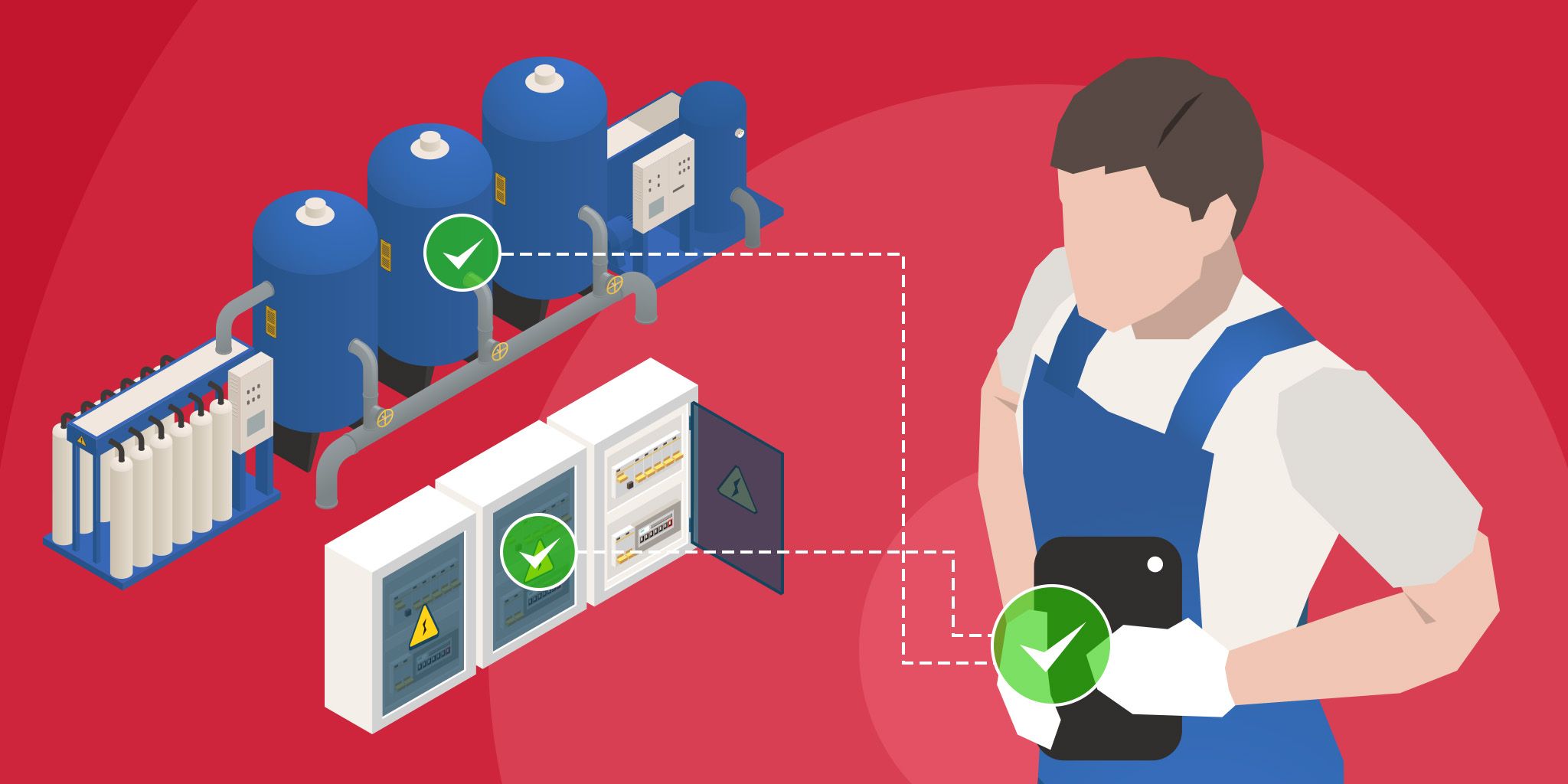Energy Harvesting in Shower Heads
Energy Harvesting in Shower Heads
- Last Updated: December 2, 2024
Everactive
- Last Updated: December 2, 2024



This project of looking at the energy harvesting technology in a shower head shows that with a very simple and inexpensive method, users can provide power sources in rather unique areas. This flexibility can lead to many more IoT devices that never require batteries. This highlights a new way to harvest renewable energy from surrounding environments (for applications and situations that contain some kind of water flow) to remove the reliance on batteries.
I recently purchased a new kitchen faucet and found that it has LED lights that turn on relative to the water flow. This has turned out to be a nice feature late at night. I wondered what the mechanism looked like on the inside. Not wanting to destroy my faucet, and finding cheaper alternatives on Amazon, I placed an order for something I could tear apart.
"This project shows that with a very simple and inexpensive method, users can provide power sources in rather unique areas."
-Everactive
Equipment & Process
The showerhead I purchased was $15. It is a very cheap plastic shower head and does not come with an attachment hose. What I liked was that I could unscrew the head and pull out the harvesting/LED module to work with directly.
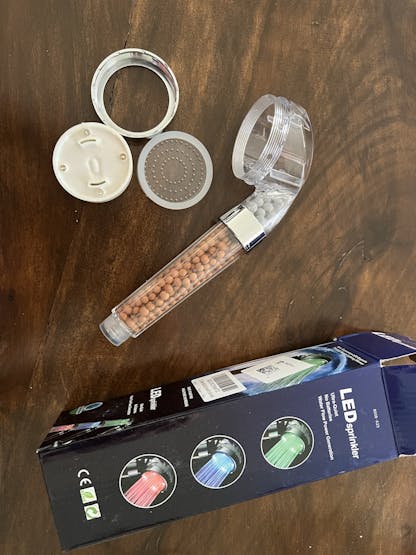

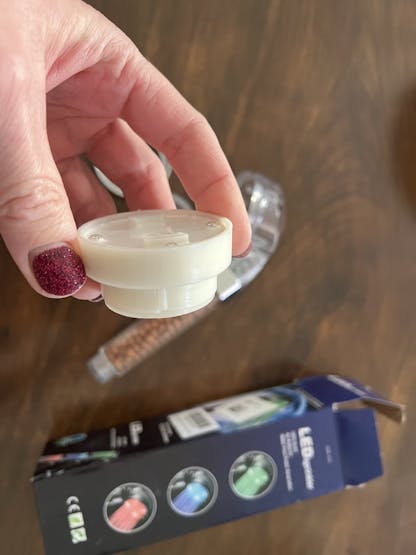

As you can see in the above pictures, the module has been completely encased in oversold plastic to make it fully waterproof for the electronics. The water comes into the harvester through the side vents located around the smaller end of the puck. The vents angle the water to be forced in line with the circle shape. The water leaves through center holes at the bottom of the puck.
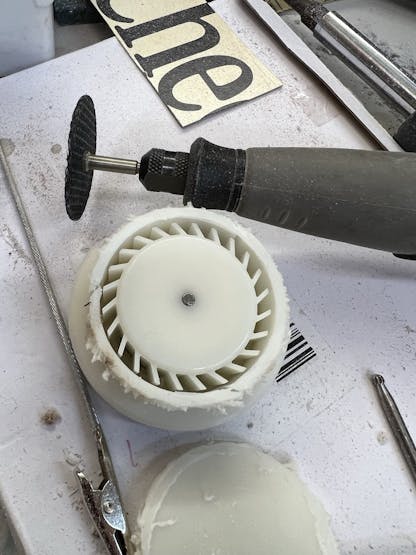
I first removed the cap over the water entry cavity. This revealed an impeller that is in line with the direction the water is forced through via the side vents. As water comes in, the impeller will spin.

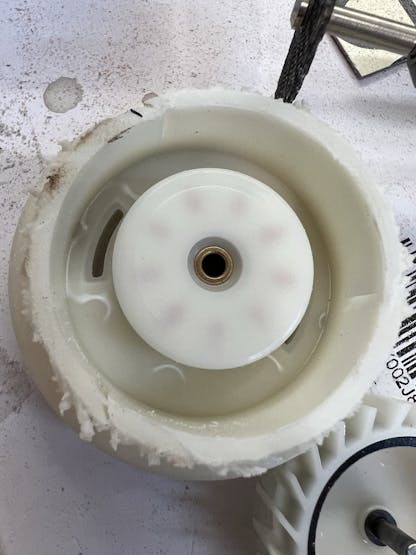
Here you can see the impeller contains a magnetic strip lining the inside. The base of the puck contains many small harvesting transformers which will pick up the magnetic field and convert it into energy to power the puck.
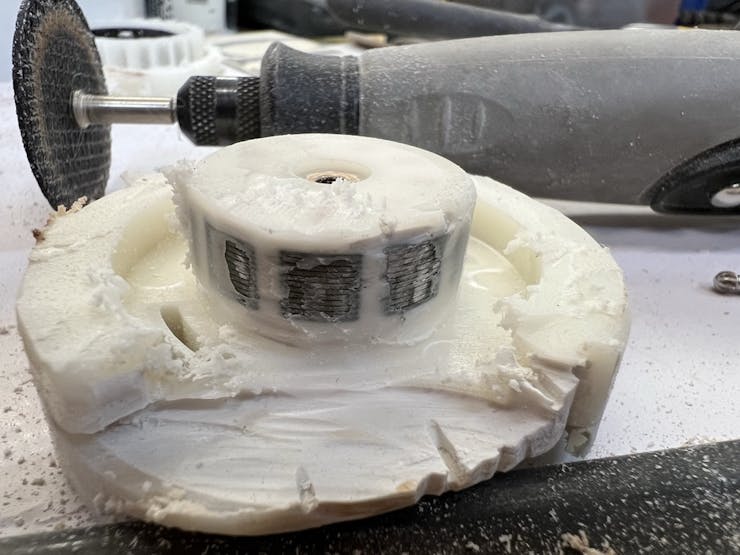
I continued to use the Dremel with the grinding wheel attachment to remove the plastic layers efficiently but with some amount of control. The intent of the tear-down was knowledge and not to retain functionality. I was able to begin to reveal the internal transformers slowly but surely.
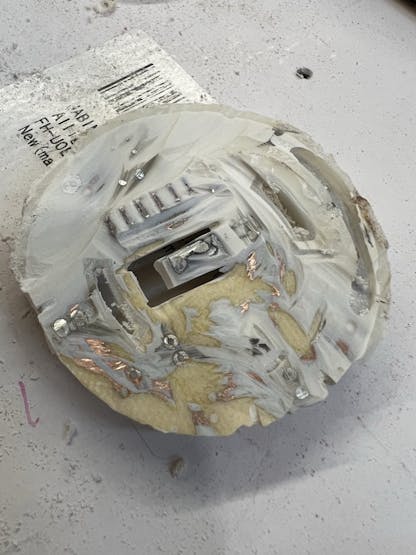

I also started to peel away the layers of plastic around the PCB. The circuit board is fairly simple which is not surprising. There was a large floating item in the center which likely was a sizable cap as part of the rectification process.
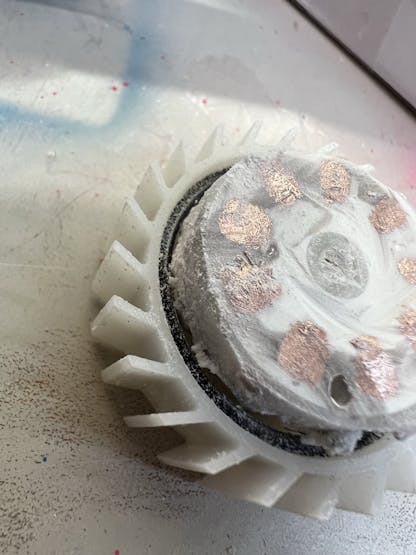
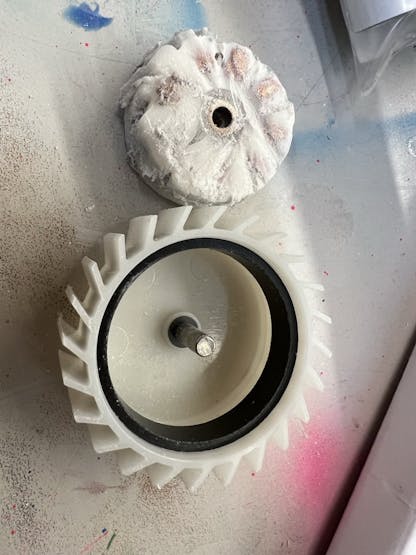
This concept is not only being used for LED lights but is also helping to power fully automated faucets.
These faucet examples utilize much larger turbine generators, but with batteryless technology leveraging a simple solution such as this energy-harvesting shower head, more features can be unlocked in a much smaller footprint with more sensing and communication capabilities available.
The Most Comprehensive IoT Newsletter for Enterprises
Showcasing the highest-quality content, resources, news, and insights from the world of the Internet of Things. Subscribe to remain informed and up-to-date.
New Podcast Episode

IoT and AI in 2026
Related Articles




